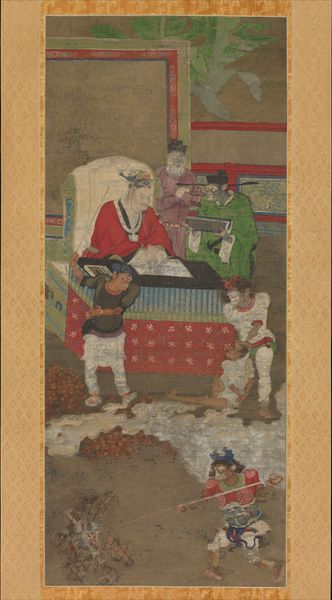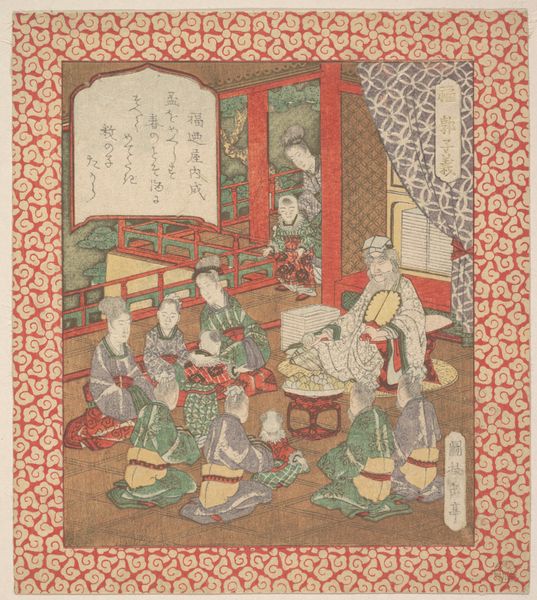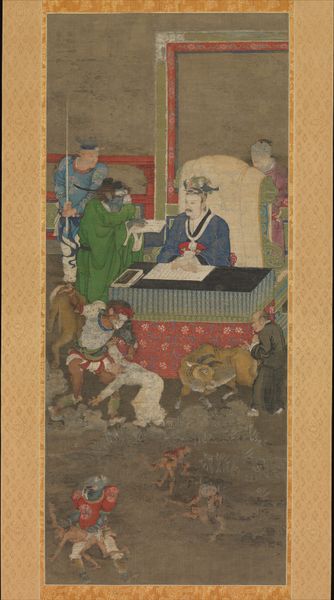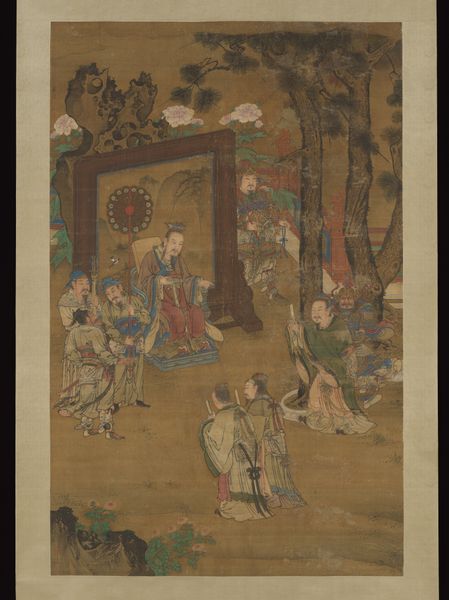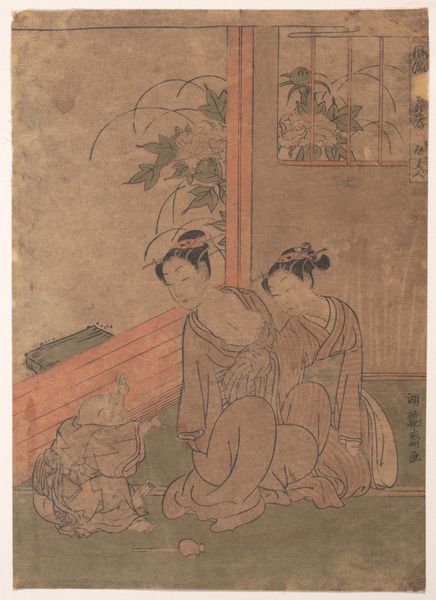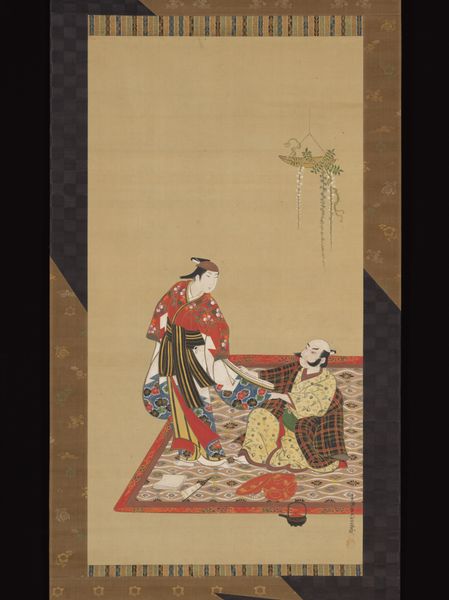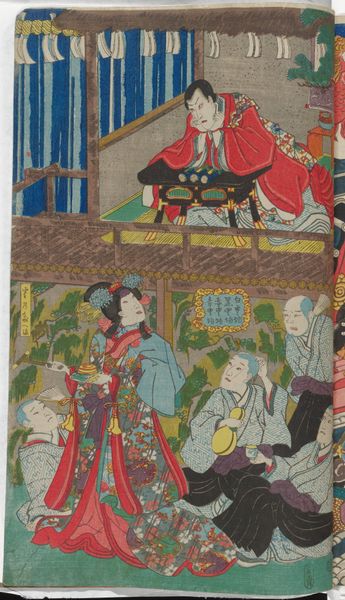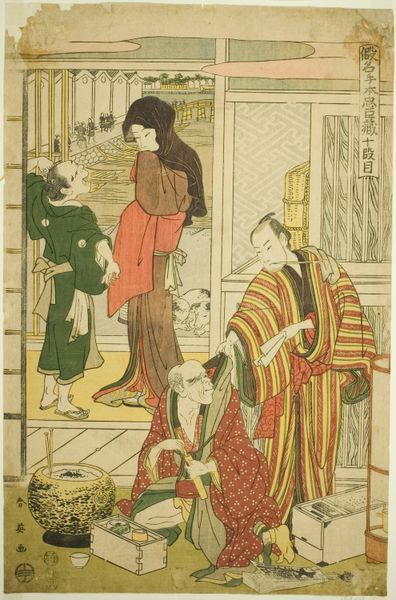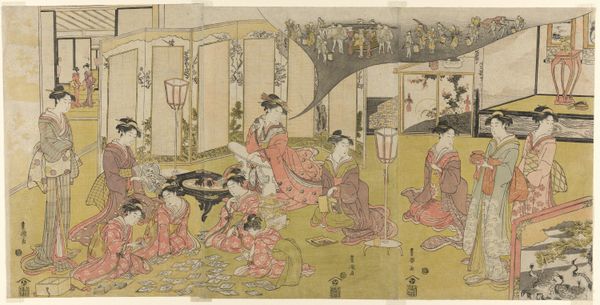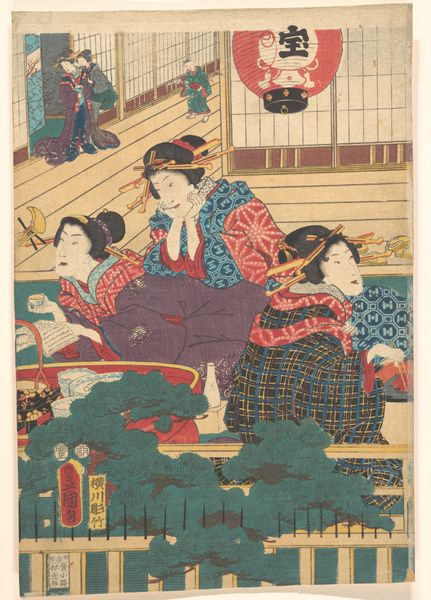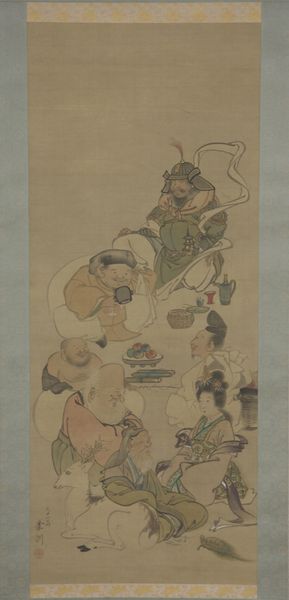
tempera, painting, ink
#
medieval
#
narrative-art
#
tempera
#
painting
#
asian-art
#
folk art
#
figuration
#
mural art
#
ink
#
men
#
china
#
sword
Dimensions: Image: 51 x 19 1/2 in. (129.5 x 49.5 cm) Overall with knobs: 80 x 27 1/2 in. (203.2 x 69.9 cm)
Copyright: Public Domain
Editor: Here we have "Ten Kings of Hell," painted between 1167 and 1194 by Jin Chushi. It's an ink and tempera on silk piece hanging here at the Met. Initially, I’m struck by the formality and the horror blended together; the central figure looks like he’s in court, but then there are these disturbing figures all around. What do you see in this work? Curator: It’s a powerful example of how symbols shape our understanding of complex themes. Note how the central king is framed by architectural motifs—they establish his authority, reflecting the earthly courts. Yet, the demonic figures and the tormented souls break that structure, revealing what happens if earthly laws are not obeyed. It pulls from Buddhism, folk religion and confucianism and that tells us that this piece carried so many cultural values. What about the colors and composition; what do they evoke for you? Editor: The red is striking. I guess that pulls the eye and the weight downwards, towards those ghostly figures. Is that a conscious thing? Curator: Absolutely. Red traditionally symbolizes good fortune and power in Chinese culture, and notice it's used for the king and his attendants; the visual system reinforces a system of status. That vividness also creates contrast with the pallid tones of the suffering souls, and in terms of psychological weight, red often evokes heightened emotion. Think about that for a second - does your personal understanding shift? Editor: It does, a bit. It seems less like a distant, abstract judgment and more immediate, even emotional. Curator: Precisely. That visual and emotional tension serves a didactic function, reinforcing moral values. By the way, do you see something specific that calls your attention in the monster imagery? Editor: Hmm... Maybe that figure with the sword in the bottom left, riding a serpent? Curator: Interesting. I would explore how serpents play into hell imagery, how snakes function as the embodiment of disorder and death, and by placing the defender on this serpent the painter communicates the necessity of evil or even punishment. Editor: That’s really fascinating; looking closer at the symbology has revealed this whole additional layer about control. Curator: Yes, art offers continuity. These paintings aren't static depictions of the past. Instead they offer symbols that evolve, reminding us that art invites conversations that never end.
Comments
No comments
Be the first to comment and join the conversation on the ultimate creative platform.
